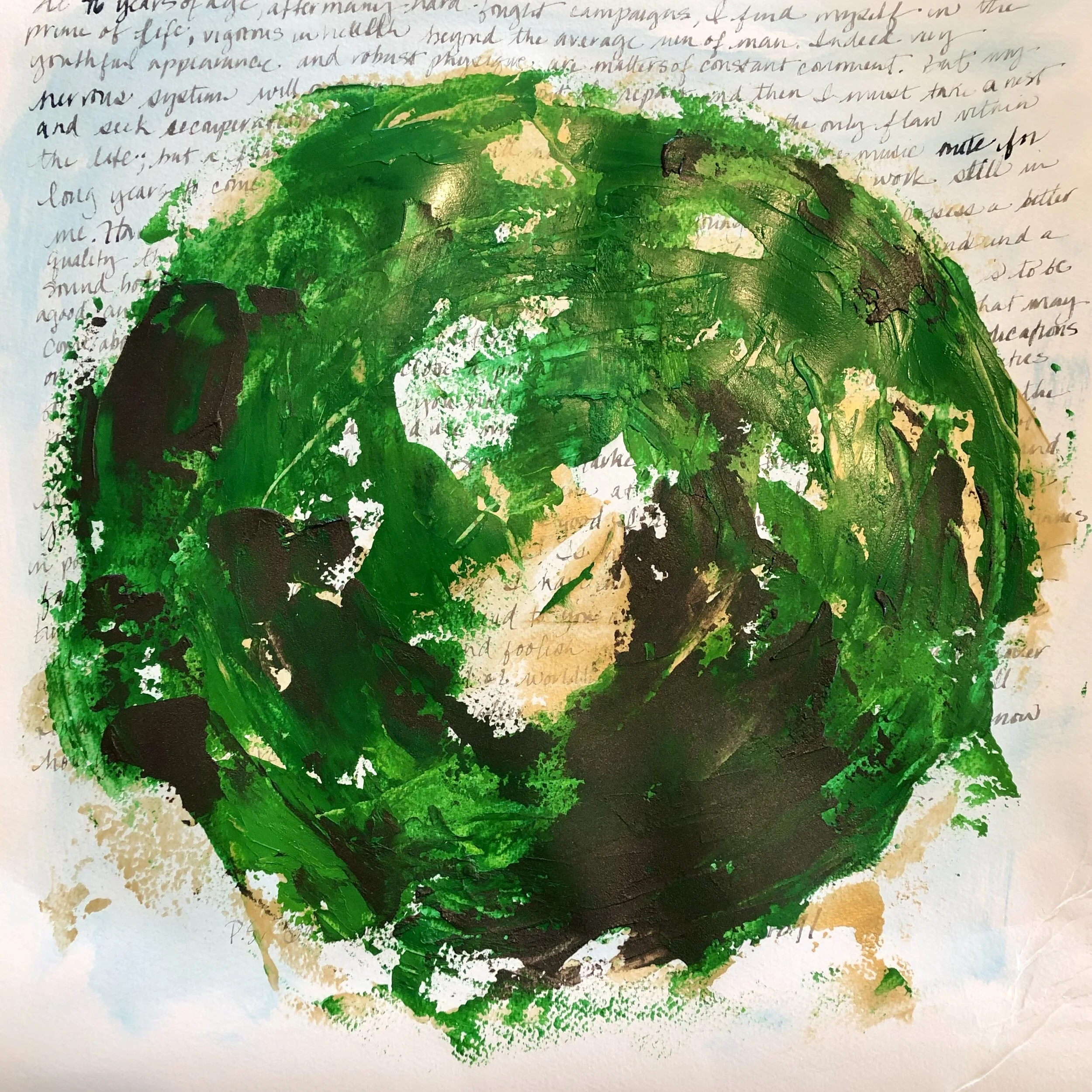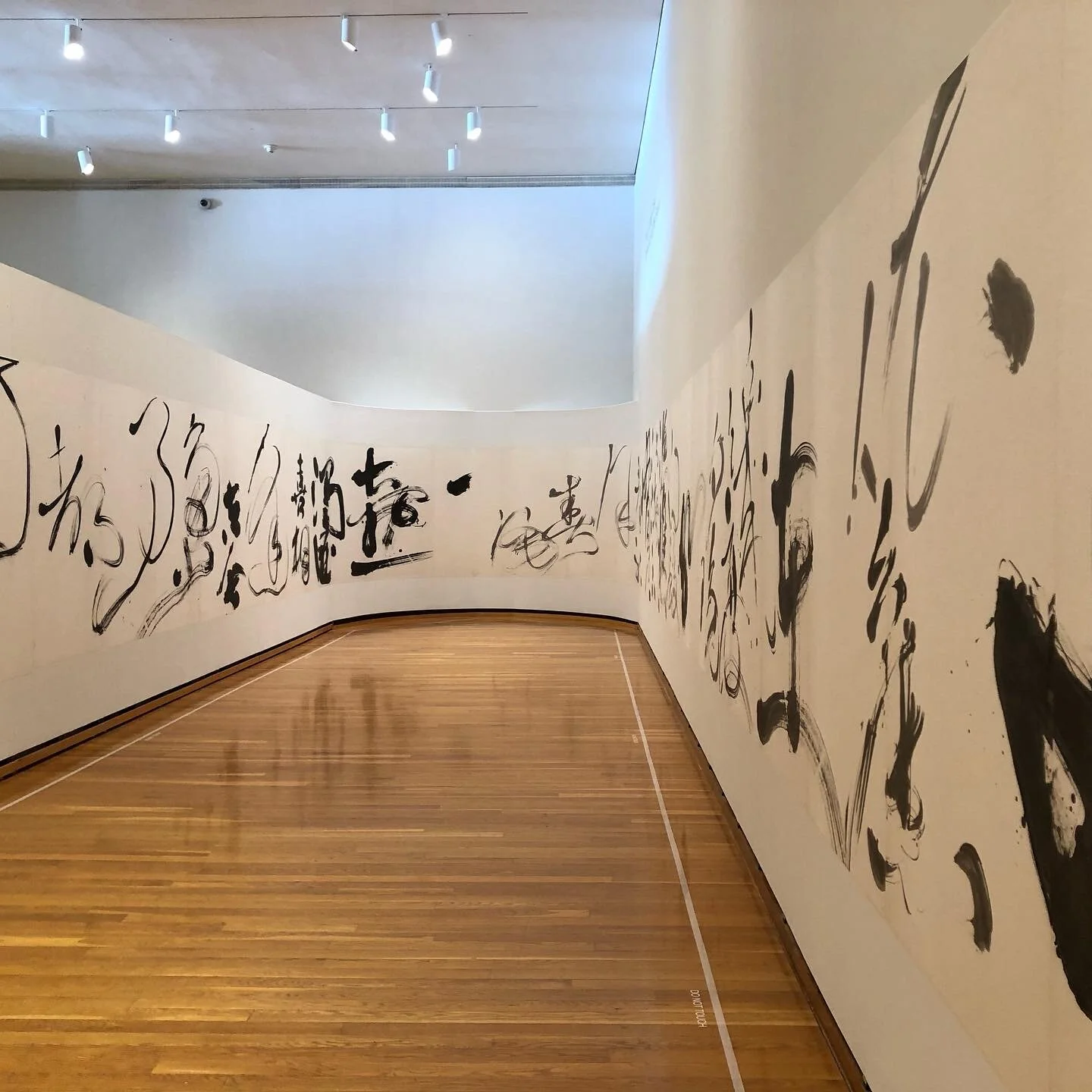The Cursive Project
Foolish World | The Cursive Project | Mixed Media | 18x18”
A few weeks ago I was sitting in the car with the Teen and in the course of the conversation she mentioned that she can’t read cursive. My mother, who has beautiful penmanship, sends cards that I have to read aloud. Though I knew this I was still shocked. She started to learn to write cursive in school, probably one of the last generations to do so, and she continued with it on her own for a while. Her brother, who is ten years older and hates to write anything by hand, can decipher the words, though I’m not sure if that’s education or personality. He’s patient with puzzles where his sister is not.
The very next day I went with friends to a new exhibit at Cornell’s Johnson Art Museum - Tong Yang-Tze’s dancing calligraphy mural that depicts a line from the ancient poem Immortal at the River. She is an artist who has taken the art of Chinese calligraphy and practiced it on a large scale intended to draw a young audience to the art form.
Funny how those concerns cross boundaries.
Seeing her work got my heart pumping. I started to wonder about handwritten letters and cursive which sent me down the rabbit hole of the internet in search of letters. It started with famous letters from Napoleon to Josephine, then Albert Einstein to a childhood friend and Charlotte Bronte to her publisher, but those were transcribed and I wanted to read the handwriting itself.
Enter Augustine E. Costello writing to his young cousin Charles in 1891.
He is a man of middle age writing from a position of relative success in both his professional and private life, having successfully navigated the journey from Ireland to New York to become a journalist and family man. He is counseling his young cousin on entering the profession while reflecting on their different educational foundations and the measures that must be adopted to succeed. He offers introductions and despairs upon his current poor health. He is a man caught up in the past while advising on the future. It is so universal.
I couldn’t decipher every word even in context as I transcribed the letter onto large paper. The missive from Augustine is written on hotel stationery - multiple pages front and back - which winds up being two large pieces of water color paper in my hand. For a few days I travel back in time where concern over ill health leads one to worry about “making the music mute for long years to come,” which also leads one to wonder if Augustine was self-medicating with whiskey and growing maudlin.
My appetite is certainly whet to find more of this, to spend some time in the past with people long forgotten as they convey their concerns and joys.



